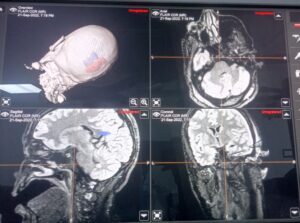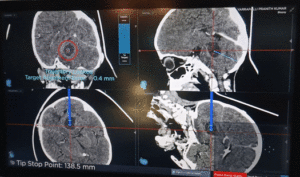Neurosurgery, the intricate art of navigating the complexities of the human brain, has greatly benefited from the integration of neuronavigation technologies. Neuronavigation systems provide real-time visualization and guidance, empowering surgeons with unprecedented precision and accuracy. In this article, we delve into the world of neuronavigation, exploring its unique capabilities, applications, and its transformative impact on neurosurgical procedures.
Neuronavigation Precise Target Localization
Neuronavigation systems offer precise target localization, revolutionizing the planning and execution of neurosurgical interventions. By overlaying preoperative imaging data onto the patient’s anatomical landmarks in real time, surgeons can precisely identify and target pathology within the brain. This level of accuracy enhances surgical planning, minimizing the risk of damage to critical structures and optimizing surgical outcomes.
Enhanced Surgical Guidance
During the surgical procedure, neuro-navigation systems provide invaluable guidance to the surgeon. They dynamically track the surgeon’s instruments in relation to the preoperative imaging, allowing for real-time feedback on instrument position and trajectory. This guidance assists in the precise localization of lesions, the planning, and execution of surgical approaches, and facilitates the removal of tumors or abnormal tissue with enhanced accuracy.
Improved Safety and Minimized Risk
One of the significant benefits of neuronavigation is its potential to improve patient safety by minimizing the risk of complications. By precisely mapping out critical structures, such as blood vessels or eloquent brain areas, surgeons can navigate around them with greater confidence and caution. This reduces the chances of unintended damage, resulting in improved patient outcomes and reduced postoperative complications.
 Expanded Surgical Reach
Expanded Surgical Reach
Neuronavigation systems enable surgeons to explore and access challenging or deep-seated brain regions that were once considered difficult to reach. By providing real-time feedback on instrument position and trajectory, these systems expand the surgeon’s reach and enhance their ability to perform minimally invasive or complex procedures. This opens up new possibilities for the treatment of tumors, vascular malformations, and other neurosurgical pathologies.
Integration of Intraoperative Imaging
Neuronavigation systems seamlessly integrate intraoperative imaging, such as intraoperative MRI or CT scans, further augmenting surgical precision. Real-time imaging allows surgeons to update their navigation and adjust their approach as needed during the procedure. This integration enables more accurate visualization, precise target verification, and immediate assessment of surgical outcomes.
Conclusion
Neuronavigation has transformed the landscape of neurosurgery by merging precision and innovation. Through its capabilities in precise target localization, enhanced surgical guidance, improved safety, expanded surgical reach, and integration of intraoperative imaging, neuronavigation empowers surgeons to navigate the complexities of the brain with unprecedented accuracy.
As technology continues to advance, neuronavigation will undoubtedly play an increasingly pivotal role in neurosurgical practice, paving the way for further advancements and improved patient care in the field.
